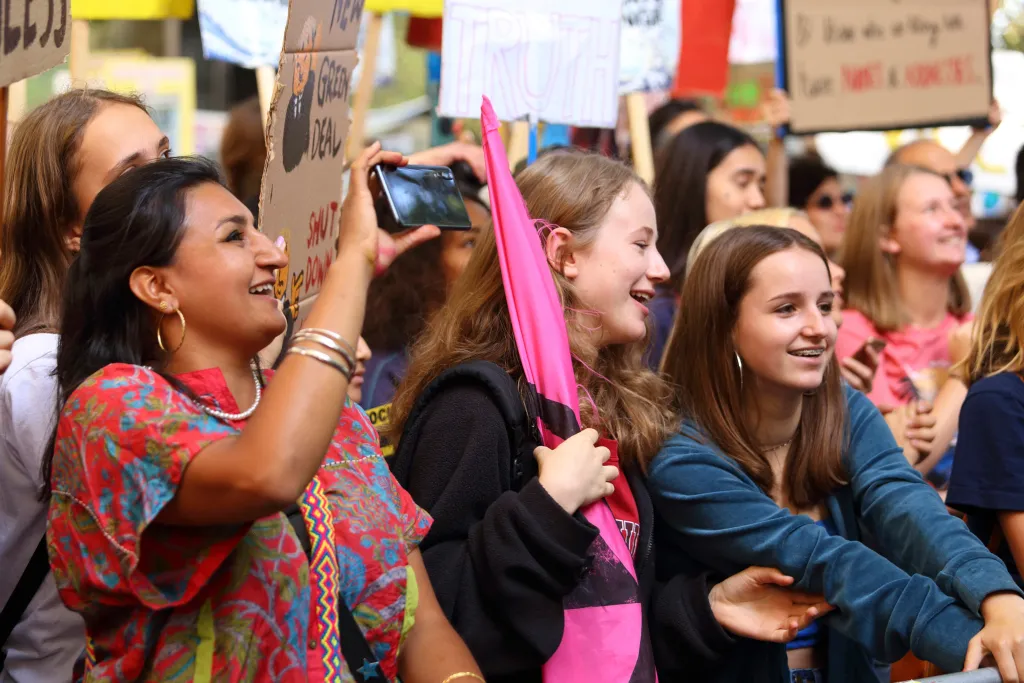Advice
Meet some remarkable winter raptors
Get to know birds of prey with our guide to what you could see in winter.
Since the early days of the RSPB, when our founders campaigned for an end to the plumage trade, demonstrations have played an important part in driving change for nature. Plus, they can be a really empowering and enjoyable way to make your voice heard. If you’d like to attend an event to express your love for nature, then read on!

Most demonstrations, marches and other protests are safe, peaceful and great fun, but we recommend that you thoroughly research any events you are considering attending.
It’s important to:
Find out more about the organisation or group that is planning the event. Does their tone and approach align with your values? Are their calls to action something that you support and are happy to be associated with?
Think carefully about the facilities you’ll need during the day – such as toilets, baby changing amenities and places to sit – and research whether these will be available. This is particularly important to consider if any members of your group have additional needs. If in doubt, speak to the organisers of the event, who should be able to give you more information and advice on whether the event is suitable for you and your group.
Ensure there will be first aiders and stewards present who will be able to provide assistance if needed.
Please be aware that event organisers may not have public liability insurance and so if you choose to attend you do so at your own risk. The RSPB accepts no liability for any aspect of a non-RSPB event or for any loss, injury or damage arising from your participation in the event.
All RSPB-run events will comply with the guidance on charity campaigning provided by the Charity Commissions for England and Wales, Scotland, and Northern Ireland.
You can find some general advice on how to stay safe while attending demonstrations, below.

So you’ve found an event you’re passionate about and you’re getting ready to attend. Great! Here are some top tips to help you have a safe and enjoyable time.
The chances are you’ll be out and about for several hours, so it pays to check the weather forecast before you go, so that you can come prepared for the conditions – whether that’s brandishing a brolly and a raincoat or packing sun cream and a hat!
The nature of demonstrations means that they can often be busy, loud and lively and as a result it’s possible that you might become separated from your group. It’s important to have a plan in place in case that happens, for example you could agree a specific meeting point to return to. Always ensure that your mobile phones are fully charged so that you’re able to contact each other if necessary. It’s also sensible to keep a written list of people’s contact details in case you lose your phone. Remember to share your plan with someone not attending the protest so that they know your whereabouts.
Whether it’s a simple slogan on a placard or a beautifully artistic banner, creating an eye-catching sign can really help to get your message across. It’s also a great way to encourage children to get involved in the event. Just remember to bring your creation home with you at the end of the day to avoid littering.
Recent changes to the law mean that in England and Wales you could now be arrested for bringing equipment to a demonstration that could be used in connection with ‘locking-on’ to things such as railings, other people, and vehicles. So it’s best to be on the safe side and, if for some reason you were likely to be carrying them, leave items like bike locks, rope, gaffer tape and glue, at home. You can find more information about the legislation here.
Even if there are shops and cafes in the area of the demonstration you’re attending, it’s important to remember that they might be unavailable due to the numbers of people and any measures put in place to manage crowds. Always bring enough water and food to keep you going for the duration of the event, as well as any medication you might need.
